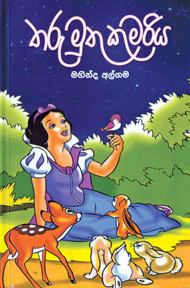Sensitivity of Sinhala lyrical compositions for children
 Over the years it is observed that radio broadcasting had paved the
way for some of the best Sinhala songs containing meaningful lyrical
compositions for both children as well as adults. With the introduction
of children’s musical programmes and radio operas, this reached the peak
of good listening. Over the years it is observed that radio broadcasting had paved the
way for some of the best Sinhala songs containing meaningful lyrical
compositions for both children as well as adults. With the introduction
of children’s musical programmes and radio operas, this reached the peak
of good listening.
As the gramophone era gradually wiped off from mainstream of
listening, the radio broadcasting system took over with a multi-trade of
functions especially in the entertainment area. From the very inception
of broadcasting Sri Lanka, the children’s programmes designed to be
listened during the evenings were felt as part and parcel of Sri Lankan
culture. I am reminded of some of the children’s programmes, first
titled as Lama Tiraya then turned to be Lama Uyana, were quite
listenable.
They were produced in the beginning by a well known poet U A S Perera
from Meetotamulla. He was known to children as Siri Ayya. The female
counterpart was known as Somi Akka. As time went on, there happened to
be a repertoire of poems, songs, lyrics and plays together with quiz
items, which by and large happened to get printed. The trend was later
followed by such presenters as Karunaratne Abeysekara, Sarath
Wimalaweera and Madawala Ratnayaka. A special group of artistes who
rallied round these radio programmes ushered in a bright period of
broadcasting in the country, especially around the late fifties and the
whole of the sixties. At least one hour was set apart each evening for
the children’s broadcasting with seven titles.

On Monday the children happen to listen to Lama Gee or children’s
songs. On Tuesday they could listen to a children’s play, where
sometimes children’s opera came to be designed. On a Wednesday Madawala
Ratnayaka’s Tikiri Sina Reli was presented. An educational programme on
a religious children’s programme on the other two days. But Saturday and
Sunday were special days where senior programme presenters like
Karunaratna Abeysekera and Sarath Wimalaweera had the chance of mixing
with children, together with their creations, rehearsed from the midday
towards evening. These programmes were specially addressed in the manner
of a magazine miscellany.
Though most songs specially written for these children’s were
broadcast, they were rarely compiled into printed volumes. One of the
few children’s lyric writers and play producers Mahinda Algama has tried
his hand in compiling 60 of this lyrics written for children over the
years in to a single volume titled as Taramuthu Kumariya (printed and
published by Fast printers 2010). This compilation of Mahinda Algama
marks certain salient aspects that deserve to be discussed. In the first
instance the children’s experiences are sensitively captured in each of
the creations.
When a child listens to a children’s song, h/she perhaps misses the
embedded experiences and verbal meanings that go into the entire
creation. But on a printed page when read slowly there could be a
certain degree of added value which could be discerned via words and
images sans music.
This factor I found emerging one of the lyrics of Mahinda Algama.
Some of the lyrics bear a resembling to some of our folk songs and folk
poems, while some others retain a certain intrinsic contemporary value.
The compositions are changing from time to time. In some lyrics the
reader will see the most modern experiences such as a journey to the
moon. But the lyric writer sees a difference. What will happen to the
age old hare image on the moon? Will he think that the man from the
earth has come to plunge the wealth of the moon? This experience is an
imaginative manner is captured in the lyric titled Hande Inna Podi Havo.
Then there are a few lyrics written on the aspects of techno world where
trains, airplanes and a few other machines are taken as examples.
All what he tries to express is that they should not harm the mind of
the child. But most songs meant for children may equally be valued by
adults, though the vice versa may not be the same. He tries sensitive
lyrics on birds, beasts and the smallest creatures like ants and snails.
He recalls how he learned in the primary classes where the picture books
and other factors led to the growing up of a child matters. They are
observed as living entities for all times and never change with the
changes artificially created by this man. Mahinda Algama, as I know him
over a period of about four to five decades, happens to be a broadcaster
with a specialty for children’s programmes, where he excelled in lyric
writing for children. Algama, as he states in his preface to his
collection of lyrics, deserved to be a signer in the beginning. But due
to some error of judgment and perhaps a blessing in disguise he was
driven to take up lyric writing for children.
This has resulted over the years for his dedication to composing
lyrics foregoing some of the other material benefits. At a time when
preschool education is stressed, and the need to obtain musical
creations for teaching purposes is required, Algama’s anthology may well
serve the purpose as an educational measure par excellence.
[email protected]
|



